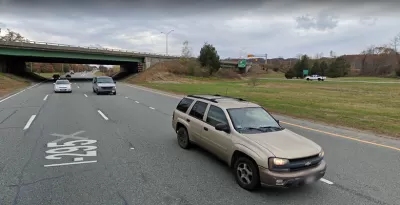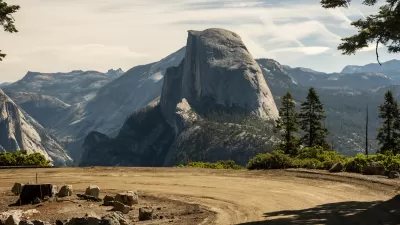In a Strong Towns article passionately argued by Charles Marohn, Rhode Island’s penchant for building new highway capacity while the rest of the state’s roads crumble is compared to Emperor Nero.

“Instead of prioritizing the proper maintenance of Rhode Island’s transportation systems, transportation officials are spending the bulk of their resources on expansion,” writes Charles Marohn in a pointed essay for Strong Towns.
Marohn compares the transportation investments of Rhode Island to Emperor Nero fiddling while Rome burned.
The poor state of the state’s transportation infrastructure is obvious by almost any measure:
More than 80% of Rhode Island’s non-interstate National Highways System (NHS) is in either poor or fair condition. Furthermore, the state leads the nation with the highest percent of rural roads with poor pavement condition. According to TRIP, a national transportation research nonprofit, driving on roads in need of repair cost Rhode Island motorists $620 million a year in additional car repairs and operating fees, or $823 per driver.
Moreover,
Rhode Island ranks last in the nation, 50th out of 50 states, in overall bridge condition. About 22% of the 1,162 bridges in Rhode Island are structurally deficient.
Marohn cites the Cranston Canyon Project, a project planned to widen five miles of roadway and construct a new bridge, as an example of Rhode Island’s commitment to funding new road infrastructure even as the state’s existing roads crumble.
While the official press release for the project “highlights rehabilitation and maintenance efforts that are included in the project, of the $78 million in non-admin project costs, widening projects constitute $41.4 million, or 53% of the total,” writes Marohn. A federal BUILD grant, awarded by the U.S. Department of Transportation, is funding about half of the expansion portion of the project, according to Marohn. (BUILD is the predecessor program, under the Trump administration, to the Biden administration's RAISE grant program. BUILD was the successor to the Obama administration's TIGER grant program.)
The article concludes with an appeal for Rhode Island, and other states, to stop funding road and highway expansion projects until existing infrastructure is stabilized—a passionate appeal for a “fix it first” approach to transportation investments.
FULL STORY: Why Is Rhode Island Building New Roads When Its Current Roads Are Falling Apart?

Montreal Mall to Become 6,000 Housing Units
Place Versailles will be transformed into a mixed-use complex over the next 25 years.

Planetizen Federal Action Tracker
A weekly monitor of how Trump’s orders and actions are impacting planners and planning in America.

California High-Speed Rail's Plan to Right Itself
The railroad's new CEO thinks he can get the project back on track. The stars will need to align this summer.

Time Running Out for Illinois Transit Bill
Chicago-area transit agencies face a daunting budget gap if lawmakers fail to agree on a funding bill by the end of the current legislative session.

Jacksonville Adding New Bike Racks
The city will add dozens of new bike racks over the coming months to prevent bike theft and reduce sidewalk clutter.

In Dense NYC, What Does ‘Human Scale’ Mean?
Advocates reject the NIMBY label, arguing that they seek a more sustainable, incremental pace of growth modeled on mid-rise neighborhoods.
Urban Design for Planners 1: Software Tools
This six-course series explores essential urban design concepts using open source software and equips planners with the tools they need to participate fully in the urban design process.
Planning for Universal Design
Learn the tools for implementing Universal Design in planning regulations.
City of Camden Redevelopment Agency
City of Astoria
Transportation Research & Education Center (TREC) at Portland State University
Municipality of Princeton (NJ)
Regional Transportation Commission of Southern Nevada





























